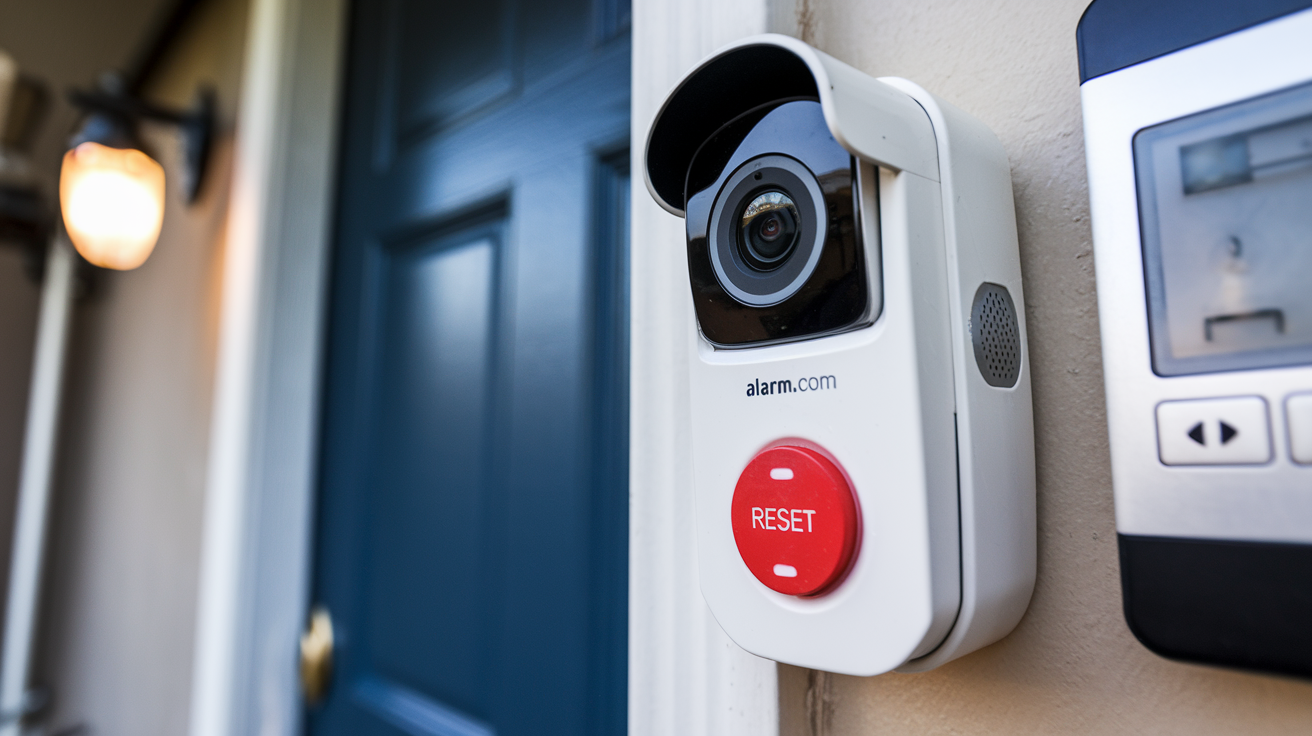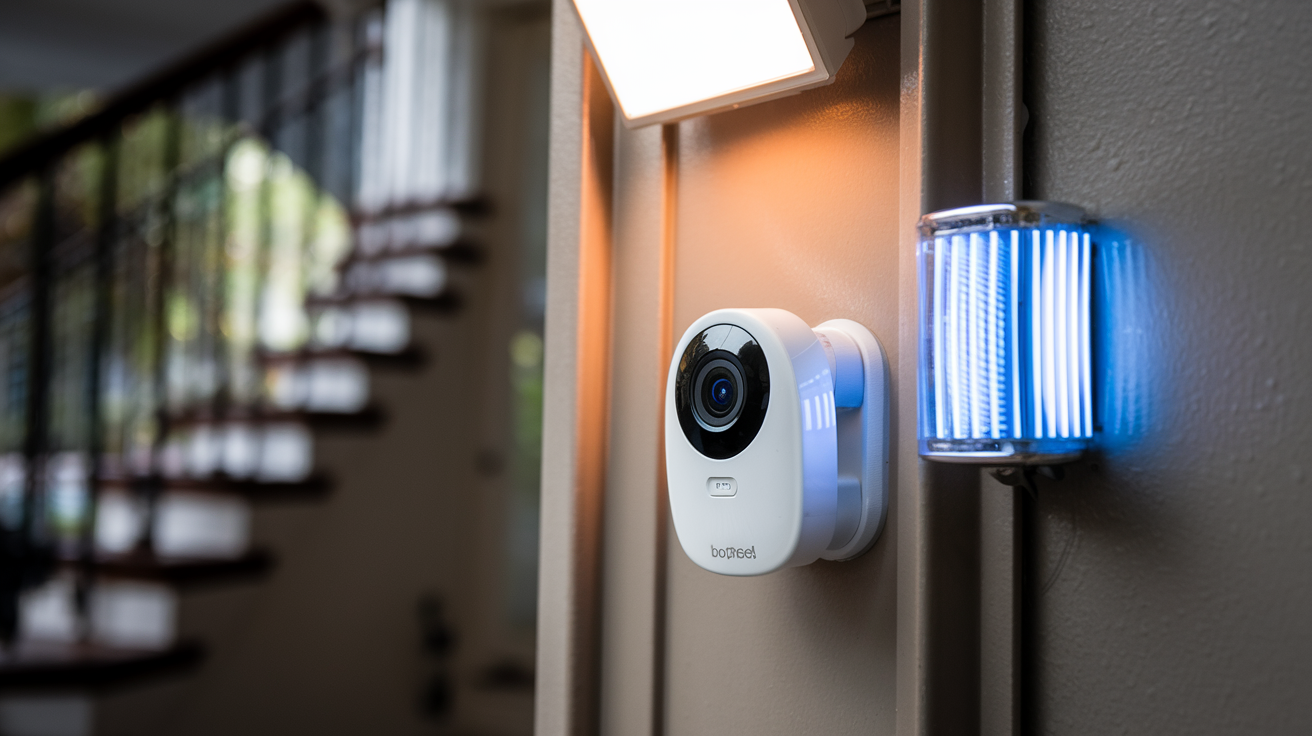Smoke alarms are essential safety Home Security System can sense the presence of smoke and fire within your home and sound an alarm to inform the residents of the impending disaster. However, there are times when fire alarms may be triggered by cooking smoke, dust, steam from showers, or even low batteries. It may be inconvenient to have your fire alarm go off unexpectedly; however, you should never turn off your alarm entirely. This article guides the reader on the correct method of how to temporarily disable the home fire alarm when it accidentally goes on.
Check for Actual Fires or Smoke First First of all, in case your fire alarm is ringing, you need to be quite cautious and inspect your house in search of actual fires or smoke. One must never take or ignore the sound of an alarm sounding. Move through the house cautiously and try to look for signs of smoke, fire, smoky smells, or overheated items like devices or appliances. Inspect every corner of the house you occasionally visit like the basement, attic, storage room, or any other place where fire can start and go unnoticed. If you come across any small fires or smoldering embers, put out the fire but do not endanger yourself in the process. If you discover smoke or signs of heavy fire, immediately leave the house and dial the fire department from a safe location before turning off the alarm. People should always remember that safety should always come first when alarms are ringing. That is why one should not switch off a nuisance alarm until he is certain that there is no real danger around.
Find where your Fire Alarm System is The next step is identifying the placement of your home's fire alarm system. In most homes and apartments today, the alarms installed are monitored through a central system. What it implies is that there will be only one master control panel that is hardwired to each of the individual smoke detectors and alarm sounders in the building. In most cases the main will be the ground floor, the main panel can be in a utility room, basement, hallway, or kitchen. It may be fixed or suspended on the wall or ceiling. Older homes may still have only individual battery-operated detectors which are described later. Do not rush to disable the system, take time and look for the system that is unique to you.
Alarm type and function Now look at the panel and try to find out what kind of panel it is and what purpose it serves. There are generally 3 kinds used residentially:
- Portable battery-operated detectors and alarms
- Lithium-sealed alarms for 10 years
- The wired 120V AC system is used with a battery backup option.
First, make sure that yours is indeed plugged into an electrical circuit and not just connected to a battery. If so, there is a small light bulb that is lit suggesting that it is always getting a power supply. Otherwise, move down to the next section which covers battery alarms.
Secondly, search for a button with a label such as “Hush”, “Mute” or “Silence”. This for a while inhibits the audible alarm sound for a few minutes while at the same time, the unit's other operations continue to run as usual. Also, look for a “Test” button which can also provide some useful information by sounding the alarm for a short time.
Use Proper System Controls For modern centrally wired systems, there will be controls on the panel to allow total disconnect of monitoring.
- Press the “Silence” button first to mute the audible alarm sound before using the keypad to input the number keys.
- Find and press the “Disable” key for at least 10 seconds
- If prompted, please enter the passcode of your choice.
All the alarms and monitoring should now be turned off at this point. However, certain important safety functions will still be operational in most models such as the automatic call to the fire department in case of an emergency. There must have been indicator lights on the panel showing various statuses of the system. If the green ‘Ready’ light is on, it means that it is connected to power and is not currently scanning. A red “Trouble” light indicates that you probably have some open zones that are still sensing a problem and need to be fixed before the system can be put on ‘alarm’ again. This light could also point to the low backup battery.
Test Your Alarms Intermittently
During the disarmed mode, the alarms have to be tested from time to time using the “Test” button. This will briefly cause each detector to be sounded to ensure that they are still capable of functioning properly whenever they are re-armed again. It is suggested to test regularly, for instance, once a month, even if the system has been turned off for the time being.
Identify the Source of the False Alarm
It is advisable to try and find out what led to the system being activated when it was not supposed to so that it is not activated again in the future. Check all the smoke detectors, heat, and pull stations without fail for defects. Make sure nothing is in the way or is dirty. This includes cleaning the detectors to ensure that they are free from dust, debris, and insects. In each unit that has been damaged or does not work when tested, make necessary repairs. Due to the degradation of the sensors over time, detectors are best replaced every 10 years or so.
Reactivate Your System
You can then enable the control panel once any problems have been fixed. Press the “Enable” button to turn the device on and hold it down for more than 10 seconds to see the green light “Ready” on. This may also entail having to input your passcode again. Ensure that the panel shows a normal non-alarm status before leaving the area for the other tasks again. Backup batteries should also be changed if they are deemed necessary due to being drained or old.
Guidelines for battery-operated smoke detectors
Specifically, for standalone battery-powered smoke detectors, the turn-off methods may differ from model to model. In most models, you can turn it off by pressing the test button for 5 to 20 sec until it stops beeping. Make sure that you re-test it and replace batteries where possible for it to be effective after the event. Remember with no panel controls, battery alarms also cannot be centrally supervised by the emergency services in any way. It is always best to have interconnected hardwired alarms but these steps can be useful if you need to shut up the battery alarms.
Stay Protected While false alarms can be irritating.
Do not tamper with or remove any fire alarms in your home as a permanent solution. It does so by eradicating real early warning signs and raising the risk of accidents substantially during an actual emergency. Use the following tips when alarms go off by mistake, but turn them back on immediately. One should always avoid embarking on a battle against a disturbance if they have not ensured adequate protection against fires. There are probably codes that define the minimum acceptable fire detection limit in your state, region, or city too. It is useful to keep operational alarms because they save lives!
Conclusion
False alarms are a common issue that can cause interference with residential life in the case of fire alarms triggered by conditions that are not hazardous. However, it is always important to first look for real threats before trying to neutralize them even for a while. Any time any smoke or fire is eliminated, the centrally wired alarm panels can be silenced and turned off through the measures outlined here where necessary in nuisance circumstances. But do remember to immediately restart your lifesaving system if there are issues that need to be fixed as soon as possible! Safe and secure homes need to ensure that crucial house fire detection systems are always in good working condition.
Protect your home today with ADT’s top-rated security solutions!
Call now at +1 877-470-7879 to get a free consultation and find out how you can secure your home with the best in the business. Don’t wait—ensure your peace of mind with ADT!






